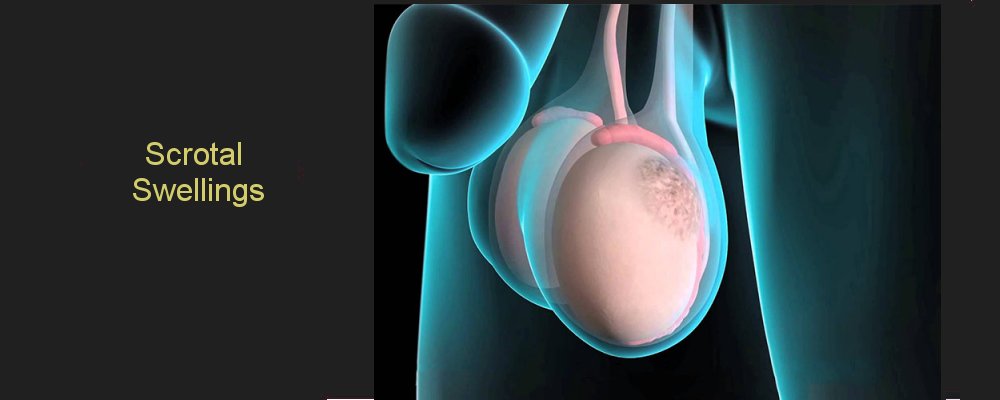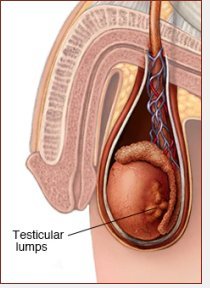
Scrotal Swellings |
||
|
||

What should I do if I have a testicular lump?
If you find a lump inside the scrotum, not arising from the skin of the scrotum itself, you should contact your GP immediately for further advice.
To feel for testicular lumps, it is best to examine yourself when you are warm and relaxed (e.g. after a bath or shower). Stand in front of a mirror and hold each testicle in turn between your fingers. Feel the body of the testicle and all the structures attached to it.
Link to testicular self examination. Click here
What are the facts about Testicular Lumps?
The vast majority of swellings in the scrotum are benign and should not give cause for concern;
Your GP will take a full history, paying particular attention to any possible trauma or infection of the testicles in the past. You should mention any previous operations on your testicles to your GP, especially surgery for an undescended testicle. Please tell your GP if you have had a vasectomy in the past.
A Physical Examination
What could have caused my testicular lump?
Solid swellings include tuberculosis & syphilis (both very rare nowadays), a sperm granuloma or nodule (usually following a previous vasectomy), chronic inflammation of the epididymis. If the lump is within the testicle itself, it may be a testicular tumour.
Download a leaflet about chronic inflammation of the epididymis.
Hydrocele repair, excision of an epididymal cyst (pictured) and open surgery, laparoscopic surgery or radiological embolisation may be needed for significant symptoms from the swelling. Otherwise, no treatment is necessary.
Download leaflets on hydrocele repair or on excision of an epididymal cyst Hydrocele click here Epididymal Cyst click here
Download leaflets on varicocele treatment by
Open Surgery, Click Here Keyhole (laparoscopic) Surgery Click here Radiological Embolisation Click here
Infection of the epididymis (sexually-acquired or secondary to a urinary infection), twisting of the testicle (torsion, usually in children) or infection of the testicle itself (e.g. due to mumps) are the commonest causes of inflammation.
Antibiotics are used for infection of the epididymis. Your GP may refer you to a urologist (if you are over 50 or have a urinary infection) or to a genitomedical clinic (if you are young or your infection may be sexually-acquired). Testicular involvement with mumps usually requires no specific treatment apart from painkillers. Suspected torsion of the testis requires emergency admission and immediate surgery.
Download a leaflet about treatment of torsion of the testis Click here
If you are found to have testicular cancer, you will be referred urgently to the urology clinic. Following further investigations (see above), you will normally be advised to have the testicle removed as soon as possible. artificial testicles
Download a leaflet about removal of the testicle for cancer Click here
Download a leaflet about insertion of an artificial testicle Click here
The need for further treatment (radiotherapy or chemotherapy) is determined by the pathology results, the results of your tumour marker blood tests & the findings on a CT scan. Once surgery has been arranged, you will referred to an oncologist for any further treatment and for long-term follow-up .
Tuberculosis and syphilis are rarely seen nowadays but are treated with appropriate antibiotics. Sperm granulomas in the epididymis may be removed if they are uncomfortable but they do not always require treatment.
Download a leaflet about removal of the epididymis Click here
Epididymal cysts
Epididymal cysts are quite common, although the exact causes aren’t fully understood. In most cases, they don’t require surgery – in fact surgical treatment is usually strongly advised against for men who wish to have children, as it can damage the sperm tube or epididymis, which acts as a reservoir for sperm, at the back of the testicle.
In men who have completed their family, or have large cysts which are causing pain, they can be excised or removed (although they may sometimes recur). This is usually performed as a day case procedure, although sometimes an overnight stay is required.
| ||
|
|
Summary |
|
